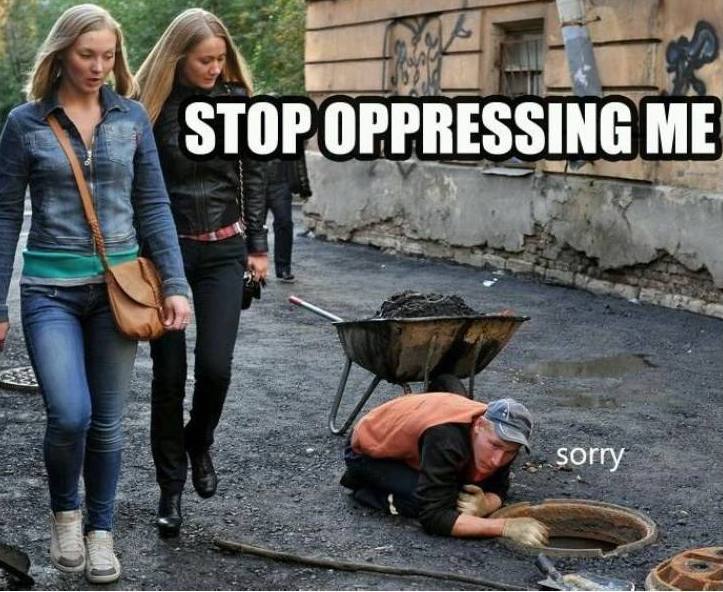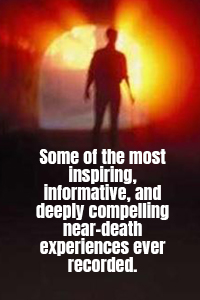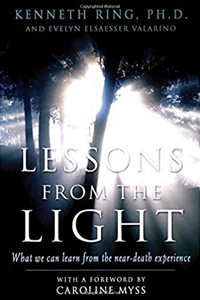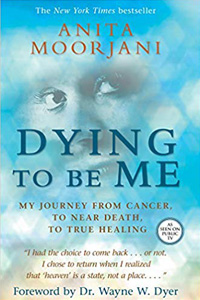…………..
Camille Paglia Notes & Quotes
…………..
What does Camille Paglia mean when she says “feminism is the collapse of western civilization”?
Paglia believes that “second wave feminism” has become neurotic and pathological. Whereas first wave feminism was about liberation and empowering women to break boundaries and become all they could be, second wave feminism has become about blaming men (and masculinity) for all the problems of the world. Instead of appreciating and celebrating the accomplishments of maleness, which includes building western civilization, second wave feminism attacks men as violent, thuggish, brutish, power-hungry, sexually-exploitive beasts. In other words, second wave feminists fail to recognize the fundamental goodness of male energy and, instead, emphasize and attack its weaknesses and excesses. At the same time, women who promote second wave feminism tend to champion the power and beauty of the feminine while overlooking and denying the dark and destructive side of female energy.
As a feminist, one of Paglia’s central concerns is that women need to be taught to stand up for themselves. A culture that teaches women they are especially weak and vulnerable and, therefore, need laws and protections that have been created especially for them, is harmful to women, men, and the culture at large.
Paglia (and Jordan Peterson) believe these unhealthy dynamics are directly related to the idea that the western world no longer studies the great traditions and histories of the world. Instead, we study things in pieces without understanding where these pieces came from or how they fit together. When one studies human history as a whole, we discover that men and women are biologically, psychologically, and sexually different. They have been from the beginning of time and are now, in spite of efforts to make everyone the same and equal. Human beings, especially men and women, are not the same and equal. They are different, with differing strengths, aptitudes, inclinations, and weaknesses. Throughout history, for example, men have primarily been the inventors, architects, and builders, the trailblazers, pioneers and engineers, while woman have been the mothers and nurturers, the healers, caregivers, and home makers. One startling point that Paglia makes is that, generally speaking, there are no female geniuses in human history. The Michael Angelos and Leonardo Divincis, the Beethovens and Mozarts, the Socrates and Platos, the Freuds and Jungs, the Einsteins, Edisons, and Teslas of the world, all tend to be males. Ditto for the world’s greatest psychopaths, dictators, serial killers and rapists. They all tend to be men. (While inventing and building is clearly a male-dominated arena, there are always exceptions: see the links below for a list of female inventors and builders throughout history.)
Studies focusing on both human and primate babies also support the perspective that gender differences are hardwired into male and female babies (see below for links that discuss these studies).
To bolster the argument that the great traditions and histories of the world are no longer taught in an honest and comprehensive way, Paglia points out that the central role that sexuality has played throughout human history has been stripped out of modern education. Whereas human history, all over the world, is full of sexual images, temples, books, statues, etc., modern education has sanitized and neutered this part of human history.
Bottomline: if you attack, villainize, and marginalize maleness; if you refuse to see the goodness of maleness and only focus on its dark side, you will topple the foundation of western civilization which, again, was built by men (with the active and essential support of women). In a similar vein, if you champion the goodness of feminine energy, and without acknowledging, containing, and purifying the dark and destructive side of the feminine, then you set forces loose in the world that will also tear the fabric of life to pieces.
One of the main things that Paglia and Peterson may not emphasize enough is that the rise of the radical feminine may be a direct response to unhealthy masculinity. Male energy, as embodied by people like Hitler and companies like Monsanto, has been out of control in recent decades/centuries. Instead of being more healthy and balanced, male innovating and building has spun out of control. The masculine creates without consideration for how their creating, innovating, and building affects the natural world, which is the domain of the feminine. You can’t have healthy building without incorporating the nurturing perspectives of the feminine, which is fundamentally more in touch with relationships and the connectedness of all life.
…………..
…………..
…………..
Modern Women Are Strong Enough Now To Give Credit Where Credit Is Due
“After the next inevitable apocalypse, men will be desperately needed again! Oh, sure, there will be the odd gun-toting Amazonian survivalist gal, who can rustle game out of the bush and feed her flock, but most women and children will be expecting men to scrounge for food and water and to defend the home turf. Indeed, men are absolutely indispensable right now, invisible as it is to most feminists, who seem blind to the infrastructure that makes their own work lives possible. It is overwhelmingly men who do the dirty, dangerous work of building roads, pouring concrete, laying bricks, tarring roofs, hanging electric wires, excavating natural gas and sewage lines, cutting and clearing trees, and bulldozing the landscape for housing developments. It is men who heft and weld the giant steel beams that frame our office buildings, and it is men who do the hair-raising work of insetting and sealing the finely tempered plate-glass windows of skyscrapers 50 stories tall.
“Every day along the Delaware River in Philadelphia, one can watch the passage of vast oil tankers and towering cargo ships arriving from all over the world. These stately colossi are loaded, steered and off-loaded by men. The modern economy, with its vast production and distribution network, is a male epic, in which women have found a productive role — but women were not its author. Surely, modern women are strong enough now to give credit where credit is due!”
— From “Are Men Obsolete?”, Camille Paglia’s opening statement at the Munk Debate, Roy Thomson Hall, Toronto, November 15, 2013. Reprinted in her book, Free Women, Free Men: Sex, Gender, Feminism
…………..
From Camille’s Facebook Page…
…………..
…………..
Women Need To Tough Up
“Every woman must think of herself as a warrior at every moment. If women want equality on college campuses, to be treated as minds equal to men, they must behave as equals meaning that they, too, expect every danger, every risk of life. Women will never be taken seriously as potential future leaders if they continue to be incapable of governing their own social lives and ceding to grievance committees, to parental proxy figures and the government… It’s ‘act like human beings who have a sense of their own dignity.’ Not like a man, but act like you know you’re the equal of a man. I am an equity feminist. I want the sexes to be treated exactly the same at college or in the workplace. I want equality of opportunity for women. However, I totally oppose special protections for women, including quotas, which I have condemned as ultimately disabling to women in the long run. This idea of ‘you’re going to run to the human resource department to complain about sexual harassment in the workplace?’ No, you stop it in the moment. Your human dignity is more important than your job. If every woman conveyed her displeasure at something that made her uncomfortable in the workplace, we wouldn’t have these escalating problems. My family came out of the working-class Italian immigrant culture — they never had any power in their workplace. Immigrant Italian working-class women would not tolerate anything off-color said in their presence.”
— Camille Paglia Cuts The ‘Malarkey’: Women Just Need To Toughen Up
…………..
Pornography, Androgyny, Boredom, Escapism, Sexual Polarization
“I have always taken the position that the men’s magazines — from the glossiest and most sophisticated to the rawest and raunchiest — represent the brute reality of sexuality. Pornography is not a distortion. It is not a sexist twisting of the facts of life but a kind of peephole into the roiling, primitive animal energies that are at the heart of sexual attraction and desire.”
…
“My 1960s generation was the gender-bending generation — we were all about blending the genders in fashion and attitude. But it has to be said that in terms of world history, the taste for and interest in androgyny is usually relatively brief. And it comes at late and decadent phases of culture! World civilizations predictably return again and again to sexual polarization, where there is a tremendous electric charge between men and women.
“The unhappy truth is that the more the sexes have blended, the less each sex is interested in the other. So we’re now in a period of sexual boredom and inertia, complaint and dissatisfaction, which is one of the main reasons young men have gone over to pornography. Porn has become a necessary escape by the sexual imagination from the banality of our everyday lives, where the sexes are now routinely mixed in the workplace.
“With the sexes so bored with each other, all that’s left are these feminist witch-hunts. That’s where the energy is! And meanwhile, men are shrinking. I see men turning away from women and simply being content with the world of fantasy because women have become too thin-skinned, resentful and high-maintenance.
“And American women don’t know what they want any longer. In general, French women — the educated, middle-class French women, I mean — seem to have a feminine composure, a distinct sense of themselves as women, which I think women in America have gradually lost as they have won job equality in our high-pressure career system…
“Ultimately every culture seems to return to sexual polarization because it may be in the best interest of human beings, whether we like it or not. Nature drives every species to procreate, although not necessarily when there’s overpopulation!”
— Camille Paglia on Hugh Hefner’s Legacy, Trump’s Masculinity and Feminism’s Sex Phobia
…………..
Hugh Hefner, Sex, Seduction, Nature
“Hugh Hefner absolutely revolutionized the persona of the American male. In the post-World War II era, men’s magazines were about hunting and fishing or the military, or they were like Esquire, erotic magazines with a kind of European flair.
“Hefner reimagined the American male as a connoisseur in the continental manner, a man who enjoyed all the fine pleasures of life, including sex. Hefner brilliantly put sex into a continuum of appreciative response to jazz, to art, to ideas, to fine food. This was something brand new. Enjoying fine cuisine had always been considered unmanly in America. Hefner updated and revitalized the image of the British gentleman, a man of leisure who is deft at conversation — in which American men have never distinguished themselves — and the art of seduction, which was a sport refined by the French.
“Hefner’s new vision of American masculinity was part of his desperate revision of his own Puritan heritage. On his father’s side, he descended directly from William Bradford, who came over on the Mayflower and was governor of Plymouth Colony, the major settlement of New England Puritans…
“We can see that what has completely vanished is what Hefner espoused and represented — the art of seduction, where a man, behaving in a courtly, polite and respectful manner, pursues a woman and gives her the time and the grace and the space to make a decision of consent or not. Hefner’s passing makes one remember an era when a man would ask a woman on a real date — inviting her to his apartment for some great music on a cutting-edge stereo system (Playboy was always talking about the best new electronics!) — and treating her to fine cocktails and a wonderful, relaxing time. Sex would emerge out of conversation and flirtation as a pleasurable mutual experience. So now when we look back at Hefner, we see a moment when there was a fleeting vision of a sophisticated sexuality that was integrated with all of our other aesthetic and sensory responses.
“Instead, what we have today, after Playboy declined and finally disappeared off the cultural map, is the coarse, juvenile anarchy of college binge drinking, fraternity keg parties where undeveloped adolescent boys clumsily lunge toward naive girls who are barely dressed in tiny miniskirts and don’t know what the hell they want from life. What possible romance or intrigue or sexual mystique could survive such a vulgar and debased environment as today’s residential campus social life?”
…
“Women’s sexual responses are notoriously slower than men’s. Truly sophisticated seducers knew that women have to be courted and that women love an ambiance, setting a stage. Today, alas, too many young women feel they have to provide quick sex or they’ll lose social status. If a guy can’t get sex from them, he’ll get it from someone else. There’s a general bleak atmosphere of grudging compliance.
“Today’s hook-up culture, which is the ultimate product of my generation’s sexual revolution, seems markedly disillusioning in how it has reduced sex to male needs, to the general male desire for wham-bam-thank-you-ma’am efficiency, with no commitment afterwards. We’re in a period of great sexual confusion and rancor right now. The sexes are very wary of each other. There’s no pressure on men to marry because they can get sex very easily in other ways.
“The sizzle of sex seems gone. What Hefner’s death forces us to recognize is that there is very little glamour and certainly no mystery or intrigue left to sex for most young people. Which means young women do not know how to become women. And sex has become just another physical urge that can be satisfied like putting coins into a Coke machine.
“This may be one reason for the ferocious pressure by so many current feminists to reinforce the Stalinist mechanisms, the pernicious PC rules that have invaded colleges everywhere. Feminists want supervision and surveillance of dating life on campus to punish men if something goes wrong and the girl doesn’t like what happened. I am very concerned that what young women are saying through this strident feminist rhetoric is that they feel incapable of conducting independent sex lives. They require adult intrusion and supervision and penalizing of men who go astray. But if feminism means anything, it should be encouraging young women to take control of every aspect of their sex lives, including their own impulses, conflicts and disappointments. That’s what’s tragic about all this. Young women don’t seem to realize that in demanding adult inquiry into and adjudication of their sex lives, they are forfeiting their own freedom and agency.
“Young women are being taught that men have all the power and have used it throughout history to oppress women. Women don’t seem to realize how much power they have to crush men! Strong women have always known how to control men. Oscar Wilde said women are complex and men are simple. Is it society or is it nature that is unjust? This was the big question that I proposed in Sexual Personae, where I argued that our biggest oppressor is actually nature, not society. I continue to feel that my pro-sex wing of feminism, which does not see sexual imagery or men in general as the enemy, has the best and healthiest message for young women.”
…
“I think you could criticize the bunny image that Hefner created by saying it makes a woman juvenile and infantilizes her. But the type of animal here is a kind of key to Hefner’s sensibility because a bunny is utterly harmless. Multiplying like bunnies: Hefner was making a strange kind of joke about the entire procreative process. It seems to me like a defense formation — Hefner turning his Puritan guilts into humor. It suggests that, despite his bland smile, he may always have suffered from a deep anxiety about sex.
“There are all kinds of complex currents in men’s relationship to women that feminism refuses to acknowledge. The main one is men’s often very unstable or ambivalent relationship with their mothers. That’s what I see in Hefner’s notorious lifestyle in the Playboy Mansion, where he stayed and worked in his bedroom all day long, dressed in pajamas and a robe. It’s a blatant regression to the womb world exactly as Elvis Presley evidently desired. Elvis’s wife Priscilla complained that all he wanted to do was stay in his bedroom all day long in the dark, watching TV and having hamburgers brought in. There was a strange kind of craving there for maternal nurturance. I think feminism is wildly wrong when it portrays men as the oppressor, when in fact men, as I have argued in my books, are always struggling for identity against the enormous power of women.
“Hefner created his own universe of sexuality, where there was nothing threatening. It’s a kind of childlike vision, sanitizing all the complexities and potential darkness of the sexual impulse. Everybody knows that Hefner’s sexual type was the girl next door, in other words, the corn-fed, bubbly American girl who stays at the borderline of womanhood but never crosses it.
“The limitations in Hefner’s erotic system can be seen when one compares Playboy to the other great magazine that it inspired, Penthouse: Its U.S. editor, Bob Guccione, was then married to a very stylish British woman, Kathy Keeton, who gave her particular cosmopolitan perspective to Penthouse. It projected an adult vision of sexuality in a highly sophisticated urban environment — people flirting in limousines, glamorous women who were as free and dominant as a man about town.
“When we look back at Hefner’s girl next door, we see that she’s kind of like a high-school cheerleader or the ingenue in a postwar musical comedy like Oklahoma. Hefner was a Midwesterner who took a very long time to change his residence from Chicago to Los Angeles, where he was suddenly moving in the fastest currents of American culture.
“Hefner’s women may have been uncomplex as personalities, but they were always warm and genuine. I never found them particularly erotic. I much preferred the Penthouse style of women, who were more femme fatales. Hefner’s bunnies were a major departure from female mythology, where women were often portrayed as animals of prey — tigresses and leopards. Woman as cozy, cuddly bunny is a perfectly legitimate modality of eroticism. Hefner was good-natured but rather abashed, diffident, and shy. So he recreated the image of women in palatable and manageable form. I don’t see anything misogynist in that. What I see is a frank acknowledgment of Hefner’s fear of women’s actual power.
“For ideological feminists to go on and on about how we cannot have women treated as sex objects is so naive, so uncultured. It shows a total incomprehension of the history of art, which flows into the great Hollywood movies and sex symbols of the 20th century. The whole history of art is about objectification. That’s what an art work is: it’s an artifact, an object. Because of our advanced brains, it is the nature of human beings to make sex objects — objects of worship. Turning a person into a beautiful thing does not automatically dehumanize her.
“All you have to do is look at the long history of the gay male world, beginning in classical Athens. No gay man has ever said when gazing at a beautiful young man with a perfect body, “I am making him passive beneath my gaze.” That would be stupid beyond belief. Every gay man knows that youth and beauty are supreme principles that deserve our admiration and veneration. When we worship beauty, we are worshipping life itself.”
— Camille Paglia on Hugh Hefner’s Legacy, Trump’s Masculinity and Feminism’s Sex Phobia
…………..
Misc Quotes
“The feminist line is, strippers and topless dancers are degraded, subordinated, and enslaved; they are victims, turned into objects by the display of their anatomy. But women are far from being victims — women rule; they are in total control … the feminist analysis of prostitution says that men are using money as power over women. I’d say, yes, that’s all that men have. The money is a confession of weakness. They have to buy women’s attention. It’s not a sign of power; it’s a sign of weakness.”
—
“Let’s get rid of Infirmary Feminism, with its bedlam of bellyachers, anorexics, bulimics, depressives, rape victims, and incest survivors. Feminism has become a catch-all vegetable drawer where bunches of clingy sob sisters can store their moldy neuroses.”
—
“I plan to vote for Barack Obama in the Pennsylvania primary because he is a rational, centered personality who speaks the language of idealism and national unity. Obama has served longer as an elected official than Hillary. He has had experience as a grass-roots activist, and he is also a highly educated lawyer who will be a quick learner in office. His international parentage and childhood, as well as his knowledge of both Christianity and Islam, would make him the right leader at the right time. And his wife Michelle is a powerhouse. The Obamas represent the future, not the past.”
—
“My stress on the truth in sexual stereotypes and on the biologic basis of sex differences is sure to cause controversy.”
—
“Sexual freedom, sexual liberation. A modern delusion. We are hierarchical animals. Sweep one hierarchy away, and another will take its place, perhaps less palatable than the first.”
—
“Western culture from the start has swerved from femaleness. The last western society to worship female powers was Minoan Crete. And significantly, that fell and did not rise again.”
—
“All the genres of philosophy, science, high art, athletics and politics were invented by men. But by the Promethean law of conflict and capture, woman has a right to seize what she will and vie with man on her own terms.”
—
“Metaphorically, every vagina has secret teeth, for the male exits as less than when he entered. The basic mechanics of conception require action in the male but nothing more than passive receptivity in the female… Nature is a Darwinian spectacle of the eaters and the eaten. All phases of procreation are ruled by appetite: sexual intercourse, from kissing to penetration, consists of movements of barely controlled cruelty and consumption. The long pregnancy of the human female and the protracted childhood of her infant, who is not self-sustaining for seven years or more, have produced the agon of psychological dependency that burdens the male for a lifetime. Man justifiably fears being devoured by woman, who is nature’s proxy.”
—
“The female body’s unbearable hiddenness applies to all aspects men’s dealings with women. What does it look like in there? Did she have an orgasm? Is it really my child? Who was my real father? Mystery surrounds women’s sexuality. This mystery is the main reason for the imprisonment man has imposed on women. Only by confining his wife in a locked harem guarded by eunuchs could he be certain that her son was also his.”
…
“Freud says, ‘Man fears that his strength will be taken from him by woman, dreads becoming infected with her femininity and then proving himself a weakling.’ Masculinity must fight off effeminacy day by day. Woman and nature stand ever ready to reduce the male to boy and infant.”
…
“Marxism is a flight from the magic of the person and the mystique of hierarchy. It distorts the character of western culture, which is based on the charismatic power of person. Marxism can work only in pre-industrial societies of homogeneous populations. Raise the standard of living, and the rainbow riot of individualism will break out. Personality and art, which Marxism fears and censors, rebound from every effort to oppress them.”
…
“We could make an epic catalog of male achievements, from paved roads, indoor plumbing, and washing machine to eyeglasses, antibiotics and disposable diapers. We enjoy safe, fresh milk and meat, and vegetables and tropical fruits heaped in snowbound cities. When I cross the George Washington Bridge or any of America’s great bridges, I think: men have done this. Construction is a sublime male poetry. When I see a giant crane passing on a flatbed truck, I pause in awe and reverence as would for a church processions.”
…
“One of feminism’s irritating reflexes is its fashionable disdain for “patriarchal society,” to which nothing good is ever attributed. But it is patriarchal society that has freed me as a woman. It is capitalism that has given me the leisure to sit at this desk writing this book. Let us stop being small-minded about men and freely acknowledge what treasures their obsessiveness has poured into culture.”
…
“If civilization had been left in female hands, we would still be living in grass huts.”
…
“The book of Genesis is a male declaration of independence from the ancient mother-cults. Its challenge to nature, so sexist to modern ears, marks one of the crucial moments in western history. Mind can never be free of matter. Only by mind imagining itself free can culture advance. The mother-cults, by reconciling man to nature, entrapped him in matter. Everything great in western civilization has come from struggling against our origins. Genesis is rigid and unjust, but it gave man hope as a man. It remade the world by male dynasty, canceling the power of mothers.”
…
“At the opening of the Odyssey, Telemachus, inspired by the male-born Athena, searches for his father by turning against his mother. Jesus too publicly spurns his mother to be about his father’s business. Male adulthood begins with the breaking of female chains.”
…
“There is no female Mozart because there is no female Jack the Ripper.”
…………..
…………..
Provocations: Collected Essays
By Camille Paglia
Introduction
This book is not for everyone.
It is not for those who believe that they and their friends, allies, political parties, or churches have found the absolute truth about mankind, present or future.
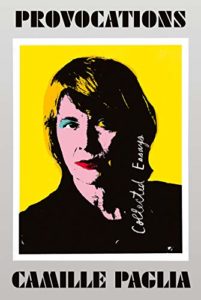 It is not for those who believe that language must be policed to serve what they view as a higher social good, nor is it for those who grant to government and its proxies on college campuses the right to require and enforce “correct” thinking.
It is not for those who believe that language must be policed to serve what they view as a higher social good, nor is it for those who grant to government and its proxies on college campuses the right to require and enforce “correct” thinking.
It is not for those who believe that art is a servant of political agendas or philanthropic goals or that it contains hidden coercive messages that must be exposed and destroyed.
It is not for those who see women as victims and men as the enemy or who think that women are incapable of asserting their rights and human dignity everywhere, including the workplace, without the intervention and protection of authority figures deputized by the power of the state.
It is not for those who see human behavior as wholly formed by oppressive social forces and who deny the shadowy influence of evolution and biology on desire, fantasy, and anarchic impulse, from love to crime.
This book is instead for those who elevate free thought and free speech over all other values, including material considerations of wealth, status, or physical well-being.
It is for those who see art and the contemplation of art as a medium of intuition and revelation, a web work of meaning that should be enhanced and celebrated and not demeaned by teachers who cynically deny the possibility of meaning.
It is for those who see women as men’s equals who, in their just and necessary demand for equality before the law, do not plead for special protections for women as a weaker sex.
It is for those who see nature as a vast and sublime force which mankind is too puny to control or alter and which fatefully shapes us as individuals and as a species.
It is for those who see life in spiritual terms as a quest for enlightenment, a dynamic process of ceaseless observation, reflection, and self-education.
A premise of this book, following the great cultural revolution of the 1960s, which was thwarted by the reactionary and elitist forces of academic postmodernism, is that higher consciousness transcends all distinctions of race, class, and gender. Sixties multiculturalism was energized by a convergence of influences from world religions — both Buddhism (a legacy of the Beat writers) and Hinduism, which suffused popular music. Standard interpretation of the radical 1960s in exclusively political terms is a common but major error that I address in detail in an essay collected here, “Cults and Cosmic Consciousness: Religious Vision in the American 1960s”.
Although I am an atheist, I have immense admiration and respect for religion as a comprehensive symbol-system, far more profound in its poetry, insight, and metaphysical sweep than anything currently offered by secular humanism. In my Cornerstone Arts Lecture at Colorado College, “Religion and the Arts in America” (also collected here), I demonstrate how central religion has been to American culture and how its emotionally expressive and multiracial gospel tradition remains the principal reason for America’s continued world dominance in commercial popular music.
I have argued for decades that true multiculturalism would be achieved in education not by splintering the curriculum into politicized fiefdoms but by making comparative religion the core curriculum of world education. An early piece on this subject (published in my first essay collection, Sex, Art, and American Culture in 1991) was “East and West: An Experiment in Multiculturalism”, a chronicle of an interdisciplinary humanities course that I co-taught with artist and social activist Lily Yeh at the University of the Arts. In the present volume, the same theme is addressed in my opening statement for a 2017 debate at the Yale Political Union, “Resolved: Religion Belongs in the Curriculum”.
Provocations covers the two and a half decades since my last general essay collection, Vamps & Tramps, in 1994. Some of my articles and lectures on sex, gender, and feminism were published separately a year ago in Free Women, Free Men. The latter volume contains my 1991 New York Newsday op-ed on date-rape that caused prolonged controversy as the first public protest against an escalating hysteria around that issue on college campuses and in the media. I continue to espouse my code of “street-smart feminism”, which frankly acknowledges the risks and dangers of life and encourages women to remain eternally vigilant and alert and to accept responsibility for their choices and adventures.
However, as the generations pass since the sexual revolution launched in 1960 by the release of the first birth-control pill, discourse about sex has become progressively more ideological, rigid, and banal. The feminist rejection of Freud as sexist has eliminated basic tools of psychological analysis once standard in cultural criticism. Few young adults with elite school degrees today appear to realize how romantic attractions and interactions often repeat patterns rooted in early family life. Nor do they seem to have heard of the complex principle of ambivalence, which produces mixed messages that can disastrously complicate social encounters.
In my first book, Sexual Personae (1990), I wrote extensively about the tormented fragility of male sexual identity — which most feminist theory, with its bitterly anti-male premises, seems incapable of recognizing. Too often, women fail to realize how much power they have over men, whose ambition and achievement in the public realm are often wedded to remorseless anxiety and insecurity. Canonical feminist theory has also missed the emotional and conceptual symbolism in sexual behavior — as in the infantile penile displays of entertainment industry moguls who appear to have routinely chosen as targets women who would show embarrassment, confusion, or fear and not those who would laugh, scold, or whack that tender member with the nearest shoe, purse, hairbrush, or lamp. Interpreting such pathetically squalid scenes in exclusively political rather than psychological terms does not help women to make their way through the minefield of a professional world that will always be stressful, competitive, and uncertain for aspirants of both sexes.
The masculine dream of sexual freedom is writ large in the drawings of Tom of Finland, who heavily influenced gay male iconography after World War Two and directly inspired photographer Robert Mapplethorpe (whom I defended in Sex, Art, and American Culture). My essay, “Sex Quest in Tom of Finland”, which was written for the massive Taschen edition of Tom’s collected works, stresses the pagan energy, vitality, and humor of Tom’s pornographic all-male world, with its panoply of archetypes borrowed from Hollywood and Nazi-era Finland.
The initial theme of my work, however, was not masculinity but androgyny, the subject of my doctoral dissertation at Yale. (Its title was Sexual Personae: The Androgyne in Literature and Art.) When the prospectus for my thesis was accepted in 1971, it was the only dissertation on sex at the Yale Graduate School. While completing its writing at my first teaching job at Bennington College, I was electrified by David Bowie in his Ziggy Stardust phase, which seemed to encapsulate everything that I had been thinking about gender. Forty years later, Bowie would put Sexual Personae on a list of his 100 favorite books. It did not surprise me: that great artist was sensing himself mirrored back from my pages. It was a tremendous honor to be invited by London’s Victoria & Albert Museum to write the article on gender for the catalog of its mammoth 2013 exhibition of Bowie costumes, which then toured the world. That essay, “Theater of Gender: David Bowie at the Climax of the Sexual Revolution”, is reprinted here.
As I have often said, my own protest against gender norms began in childhood with my flagrantly dissident Halloween costumes: Robin Hood at age five; a toreador at six; a Roman soldier at seven; Napoleon at eight; Hamlet at nine. (A photo of me as Napoleon appears elsewhere in this book.) From college on, I adopted the gender-bending styles of Mod London, which were effectively transvestite. However, despite my lifelong transgender identification, I do not accept most of the current transgender agenda, which denies biological sex differences, dictates pronouns, and recklessly promotes medical and surgical interventions. An excerpt from an interview with the Weekly Standard, where I condemn the use of puberty blockers on children as a violation of human rights, is collected here. When Sexual Personae was released, I called it “the biggest sex change in history”. Gore Vidal rightly said that the voice of Sexual Personae was the voice of his transsexual heroine, Myra Breckinridge. Aggressive, implacable, and scathingly satirical, that voice is a transgender construction, using the materials of language and mind. To questioning young people drawn to the siren song of hormones and surgery, I say: stay fluid! Stay free!
It is surely my sexually dual perspective that has allowed me to understand and sympathize with Alfred Hitchcock’s awed and quasi-mystical view of women, which so many other feminists have reductively condemned as “misogynous”. I defended Hitchcock in my British Film Institute book on The Birds (1998), as well as in essays such as “Women and Magic in Alfred Hitchcock”, written for the BFI’s 2012 Hitchcock retrospective and collected here. Other pieces on film in this book celebrate movie music and lament the waning of European art film as well as the decline of film criticism.
One of my principal ambitions since my student days has been to develop an interpretative style that could integrate high and popular culture, which had exploded during the 1960s. I call myself a Warholite: Andy Warhol’s improvisational, avant-garde short films (starring gay hustlers and drag queens) and his conversion of publicity photos of Hollywood stars into radiant Byzantine icons provided an inspiring template for my work. In contrast, I detest and oppose academic media studies that monotonously recycle judgmental, politicized terminology from the passé Frankfurt School, which has no feeling whatever for popular culture.
Provocations, I submit, demonstrates the range and flexibility of my system of interpretation, which fiercely attacks when necessary but which respectfully illuminates both the artist and the artwork, from Old Masters like Shakespeare and Leonardo to modern music stars like Prince and Rihanna. In college, I was impatient with the New Criticism, which I felt was too narrow and genteel and had to be urgently expanded with history and psychology. But I have continued to apply the New Critical technique of close textual analysis to everything I write about, as in my pieces here on Picasso’s “Girl Before a Mirror” or on what I call the “psychotic mysticism” of poet Theodore Roethke. One of my long-range goals in college was to break down the barriers between genres, and I believe that my interdisciplinary method has in fact done that — extending the same minute focus and dramatic commentary to all of the arts but also to contemporary politics.
My columns and op-eds on politics over the past quarter century are too numerous to reprint or even catalog. I think I showed special facility for analyzing the horse race of presidential primaries, when my reviews of televised debates, for example, were usually far more attuned than those of the major media to how the candidates were actually being perceived by mainstream voters. I consider the cover-story Salon.com interview (collected here) that I did with editor-in-chief David Talbot in February 2003 to be a supreme highlight of my career: I was virtually alone among political commentators in condemning the imminent invasion of Iraq. Other leading media, including the New York Times and the New Yorker, had shockingly surrendered to tissue-thin government propaganda.
Full columns have been reproduced here on three political figures: Bill Clinton, Sarah Palin, and Donald Trump. I have written so voluminously and variously about Hillary Clinton since the Clintons’ arrival on the national scene in 1992 that there was no one piece that could be considered representative. Hence I have interwoven excerpts about her from numerous articles in the Media Chronicle at the back of the book. (It lists articles in English only. My extensive articles and interviews on politics, art, and other subjects in the foreign press, particularly in Italy and Brazil, have been omitted.) The reader should be forewarned that I began as a Hillary fan but became steadily disillusioned over the years.
I was speaking, writing, and crusading about the first woman president throughout the 1990s, when most other feminists were absorbed with policy issues. Reproduced in this book is a poster advertising my appearance at a 1996 debate at the Yale Political Union (“Resolved: America Needs a Female President”), which was recorded for national TV broadcast by C-SPAN. The Media Chronicle also contains excerpts of then-controversial columns or articles where I was notably prescient, as a registered Democrat, about developing problems and evasions in my own party that would eventually lead, many years later, to its stunning surprise defeat in the 2016 presidential election.
Education is a major theme in this book. As a career teacher of nearly half a century, I have watched American universities miss their epochal opportunity for radical curricular reform in the 1970s and descend decade by decade into the balkanized, bureaucratic, therapeutic customer-service operations that they are today. High scholarly standards and deep erudition (as admirably exemplified by the stiff, stuffy, old-guard professors at Yale when I arrived as a graduate student) have so vanished that their value and indeed their very existence is denied by today’s bright, shiny, and shallow academic theorists. The real revolution would have been to smash the departmental structure of the humanities, reunite the fragmented fields of literature and art, and create an authentically multicultural global curriculum.
A principal piece in this volume is “The North American Intellectual Tradition”, which was given as the Second Annual Marshall McLuhan Lecture at Fordham University. There as in my long exposé, “Junk Bonds and Corporate Raiders” (published by Arion in 1991 and reprinted in Sex, Art, and American Culture), I reject European post-structuralism and call for a reorientation toward North American pragmatism, grounded in nature. The academic stampede toward pretentious, abstruse French theorists in the 1970s was a grotesque betrayal of the American 1960s, which was animated by a Romantic return to nature and a reconnection of art with the sensory — the dynamic life of the body. Michel Foucault’s primary influence, by his own admission, was playwright Samuel Beckett — whose depressive postwar nihilism was swept away by the communal music and dance of the 1960s. Today’s jargon-spouting academic postmodernists with their snidely debunking style are not the heirs of Sixties leftism but retrograde bourgeois elitists, still picking through the shards of T.S. Eliot’s Waste Land.
This book contains multiple examples of my early involvement with the Web. “Dispatches from the New Frontier: Writing for the Internet” documents the process by which I developed the unique format of my long-running Salon.com column. Because articles written for the Web are viewed on a screen rather than a page, adjustments must be made in syntax, diction, and visual design. A continuing failure to recognize this has produced the rafts of slack, verbose, meandering prose that currently clogs the Web on both news sites and blogs. Historically, it will eventually be recognized that my lengthy, multi-part Salon column, with its variety of tone and topics, was the first blog, a new literary genre of the digital age. When I began writing it, only Mickey Kaus was doing anything comparable, but his Slate.com column was wholly focused on politics. My autobiographical diary approach was so new that Salon’s editor-in-chief relayed complaints from other staffers that there was too much of me in my columns. In retrospect, it is clear that my work for Salon prefigured today’s universal social media.
“Dispatches from the New Frontier” also describes how the geographically scattered, maverick founders of the Web instantly understood and supported my libertarian and multi-media ideas. In the early 1990s, while my work was being ostracized by the academic establishment, the dissidents on The Well were discussing it from coast to coast. Stewart Brand, a co-founder of The Well, interviewed me in 1993 for the premiere issue of Wired, which called me “possibly the next Marshall McLuhan”. I co-hosted early online chats, an innovative interactive genre whose format was, by today’s standards, strikingly primitive.
Included in this book is the transcript of a collaboration I did on “Oscar Style” with Glenn Belverio (in his drag persona as Glennda Orgasm) for an America Online “CyberPlex Auditorium” in 1996. The print-out format of our dialogue with real-time questioners, as the Academy Awards unfolded on TV, has been reproduced as exactly as possible. Before the Web, people had to wait more than a full day before there could be newspaper coverage of the Oscars, with their climactic late-night finale. Hence I lobbied David Talbot about the Web’s potential for rapid response to the Oscars broadcast, and the result was a yearly feature on Salon, “Camille Does the Oscars”. I also campaigned in Salon and Interview magazine for comprehensive reporting on Oscars fashions — another of my prophetic themes: the red carpet would eventually win epic coverage by Joan Rivers and become a media staple, currently on the verge of excess.
Finally, two interviews here focus on my philosophy and practice as a writer. My writing has always been motivated by the search for a voice — or rather for many voices, keyed to the moment. There is nothing more important to me than the power of words to describe, recreate, entrance, and provoke.
…………..
Related Articles
• Monkeys Have Gender-Specific Toy Preferences — And They’re Very Similar To Ours
• Do Girls Really Prefer Dolls? The Science Behind Gender Preference In Toys
• ‘A Gender Equality Paradox’: Countries With More Gender Equality Have Fewer Female STEM Grads
…………..
Women Inventors & Builders Throughout History
• List of Inventions and Discoveries by Women
• 20 Women Inventors You Should Know
• 16 Women Scientists You Should Know
• 10 of the World’s Greatest Female Inventors
• 5 Female Inventors Who Changed Life As We Know It
• Omitted from History: Women in the Building Trades
…………..
Related Resources
• Camille Paglia on Facebook
• Wikipedia on Camille Paglia
• Camille Paglia Quotes
• Camille Paglia on Hugh Hefner’s Legacy, Trump’s Masculinity and Feminism’s Sex Phobia
…………..
You can support this website by using the amazing, super-fast, crypto-friendly Brave Web Browser



